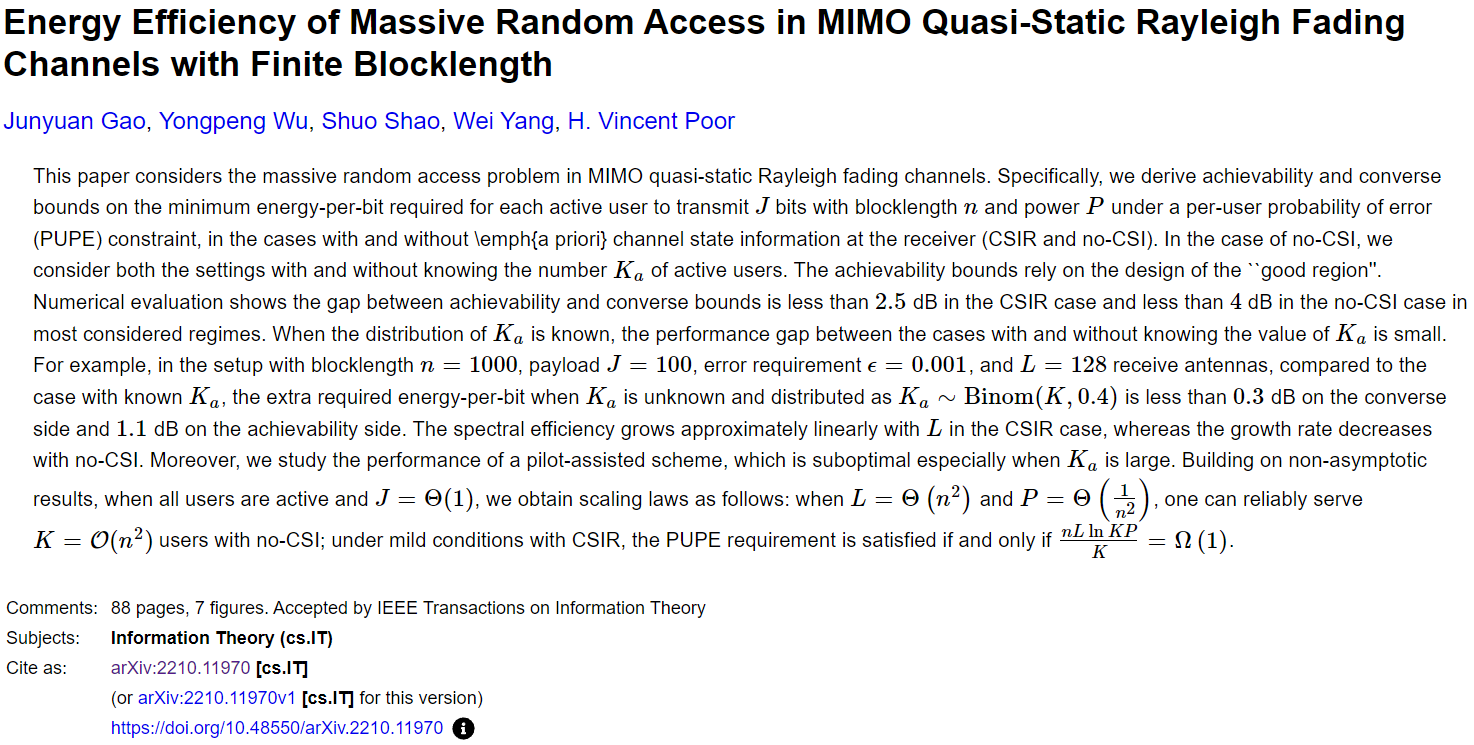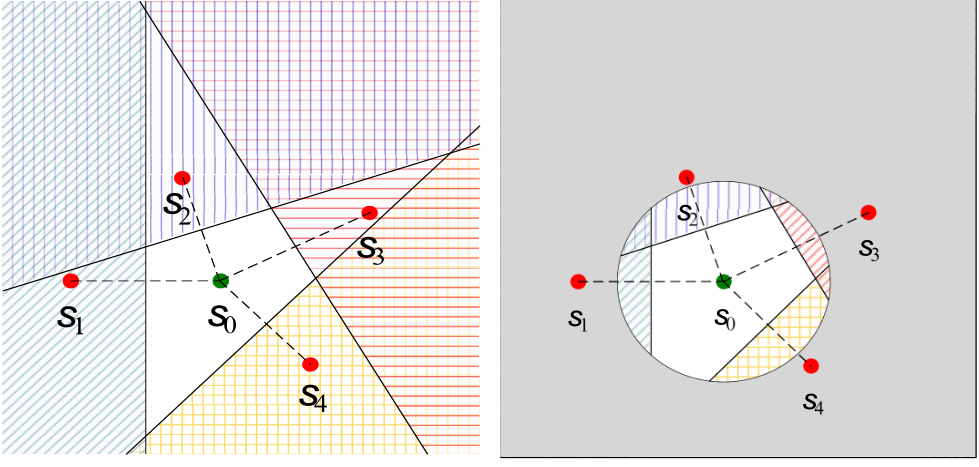- Home
- About Us
- Students
- Academics
-
Faculty
- Electrical Engineering
- Automation
- Computer Science & Engineering
- Electronic Engineering
- Instrument Science and Engineering
- Micro-Nano Electronics
- School of Software
- Academy of Information Technology and Electrical Engineering
- School of Cyber Security
- Electrical and Electronic Experimental Teaching Center
- Center for Advanced Electronic Materials and Devices
- Cooperative Medianet Innovation Center
- Alumni
-
Positions
-
Forum
News
- · Shanghai Jiao Tong University professors Lian Yong and Wang Guoxing's team have made remarkable progress in the field of high-efficiency pulse neural network accelerator chips.
- · AI + Urban Science research by AI Institute was selected as cover story in Nature Computational Science!
- · The first time in Asia! IPADS's Microkernel Operating System Research Wins the Best Paper Award at SOSP 2023
- · Delegation from the Institution of Engineering and Technology Visits the School of Electronic Information and Electrical Engineering for Journal Collaboration
- · Associate professor Liangjun Lu and research fellow Jiangbing Du from Shanghai Jiao Tong University made important advancements on large capacity and low power consumption data transmission
Prof. Yongpeng Wu’s Team Made an Important Progress on 6G Fundamental Research
Recently, Prof. Yongpeng Wu’s team at Shanghai Jiao Tong University has made an important progress on 6G fundamental research. Their work, titled as “Energy efficiency of massive random access in MIMO quasi-static Rayleigh fading channels with finite blocklength”, has been accepted by IEEE Transaction on Information Theory. The first author and the corresponding author of this paper are Ph.D. candidate Junyuan Gao and Prof. Yongpeng Wu, respectively.

IEEE Transactions on Information Theory was founded in 1953 and is a top journal in the field of information theory. The scope of research includes fundamental information-theoretic analysis related to information transmission, processing, and utilization.
In the White Paper “6G Typical Scenarios and Key Capabilities” released by the IMT-2030 (6G) Promotion Group in July 2022, ultra-massive machine type communications (umMTC) is regarded as one of the five typical scenarios of 6G. Two key features of umMTC are short-packet transmission and random access. Therefore, the classical multi-user information theory proposed by Shannon based on infinite blocklength and deterministic user activities is no longer applicable in umMTC. The work of Prof. Yongpeng Wu's team has solved the open question of establishing systematic information-theoretic framework for umMTC. The reviewers rated the results of this paper as “of significant value for the research community”.
Background
The design of uplink communication systems in umMTC is influenced by four issues: 1) the rapidly expanding number of users with random activity patterns; 2) the relatively small quantity of information bits to transmit; 3) the strict requirement in communication latency; 4) the stringent demand on communication energy efficiency. To address these issues, massive random access technologies have been proposed recently. However, most of the existed information-theoretic results on massive random access technologies focus on the asymptotic regime, i.e., these results are established under the assumption that the blocklength, payload, and number of users tend to be infinite. Since this assumption cannot capture the features of umMTC, the existed results cannot provide effective guidance for the transmission scheme design in umMTC.
Contributions
Compared with traditional multiple access channels, the number of users is greatly increased in massive random access channels, leading to a considerable increase in the number of error events. As a consequence, the simple union bound can be substantially loosened if not applied with care. To address this problem, the bounding technique proposed by Fano is applied in this work, whose performance relies on the choice of a region, interpreted as the “good region”, around the linear combination of the transmitted signals. In this work, an appropriate “good region” is designed for massive random access channels. On the basis of this region, tight achievability and converse bounds are derived for massive random access in three-dimensional space-time-frequency channels in the non-asymptotic regime.

Error space and “good region”
Some conclusions are drawn building on the derived non-asymptotic bounds, which are of great significance for the transmission scheme design in umMTC. First, when the number of users is below a critical threshold, the minimum energy-per-bit required for reliable massive random access is the same as that in the single-user setting. In this case, the multi-user interference can be almost perfectly cancelled by the traditional successive interference cancelation (SIC) receiver and each user can approach the performance limit by using classical single-user coding scheme. Second, the minimum energy-per-bit required for reliable massive random access increases with the number of users when it is above a critical threshold. In this case, the performance of traditional SIC receiver significantly deteriorates. Thus, it is important to design new multi-user coding and decoding architectures for the setting with a large number of users. Third, the asymptotic analysis shows that the use of large antenna arrays has great potential of saving power consumption. Specifically, for a given blocklength n, to reliably serve K = O(n2) users, when the number of receive antennas is increased from the order of magnitude n/log n to n, the minimum required power can be considerably decreased from 1/n to 1/n2.
Prof. Yongpeng Wu’s team has made an important progress in establishing systematic information-theoretic framework for umMTC.

The number Ka of active users versus the energy-per-bit Eb
The primary affiliation of this paper is Shanghai Jiao Tong University (SJTU). The first author is Ph.D. candidate Junyuan Gao in SJTU, the corresponding author is Prof. Yongpeng Wu in SJTU, and other coauthors include Associate Prof. Shuo Shao in SJTU, Dr. Wei Yang in Qualcomm Research, and Prof. H. Vincent Poor (Foreign Member of the Chinese Academy of Sciences) in Princeton University. The research was funded by the National Natural Science Foundation of China and the National Key R&D Program of China.
Paper link: https://arxiv.org/abs/2210.11970
-
Students
-
Faculty/Staff
-
Alumni
-
Vistors
-
Quick Links
